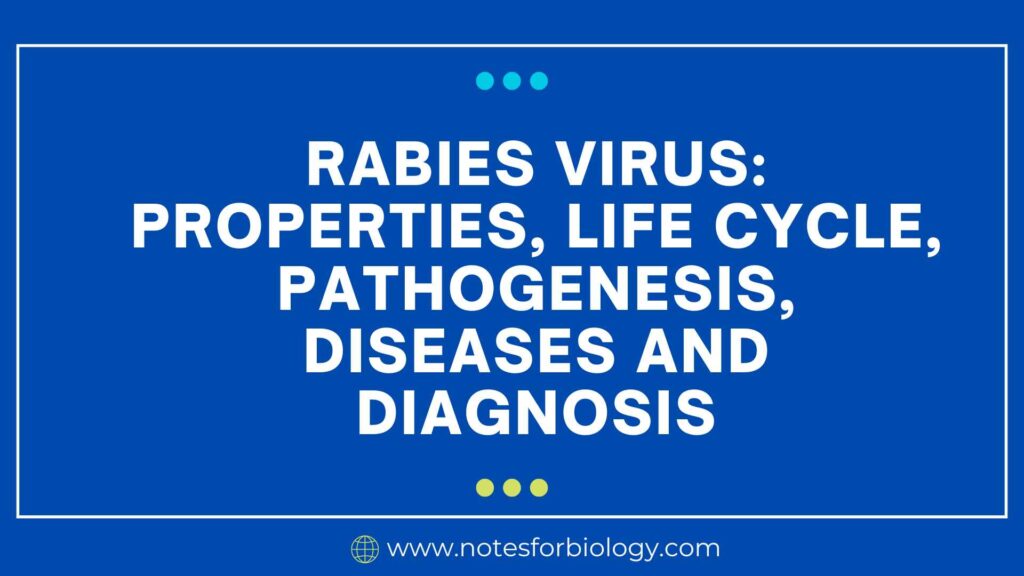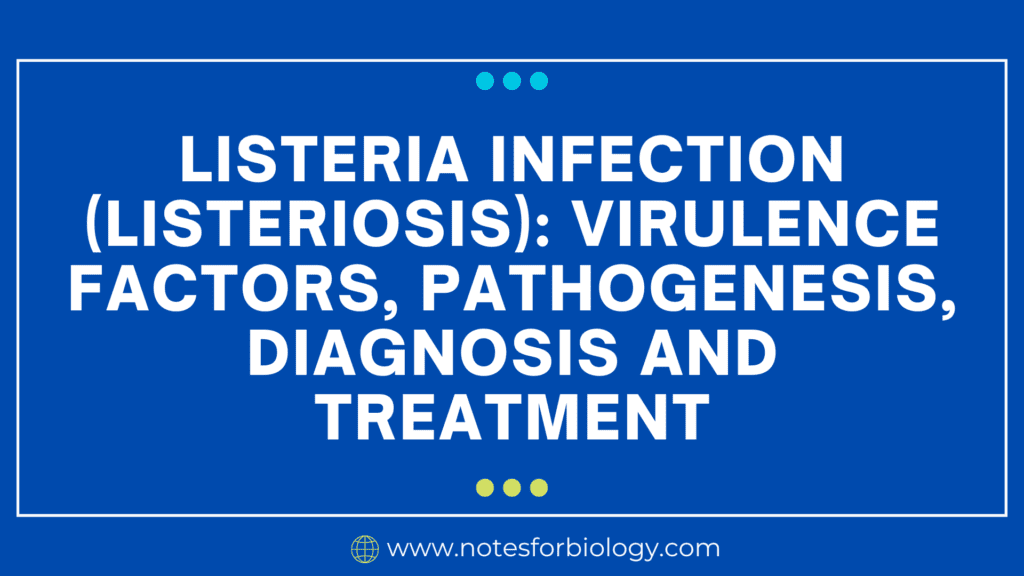Rabies virus is a neurotropic virus that belongs to the Rhabdoviridae family. It is a single-stranded RNA virus and is primarily transmitted through the bite of an infected animal, such as a dog or bat. Rabies virus is a highly neurotropic virus that causes a severe and usually fatal disease known as rabies in mammals, including humans. It belongs to the Rhabdoviridae family and the Lyssavirus genus.
Table of Contents
Rabies virus
Rabies virus is a neurotropic virus that belongs to the Rhabdoviridae family. It is a single-stranded RNA virus and is primarily transmitted through the bite of an infected animal, such as a dog or bat. Rabies virus is a highly neurotropic virus that causes a severe and usually fatal disease known as rabies in mammals, including humans. It belongs to the Rhabdoviridae family and the Lyssavirus genus.
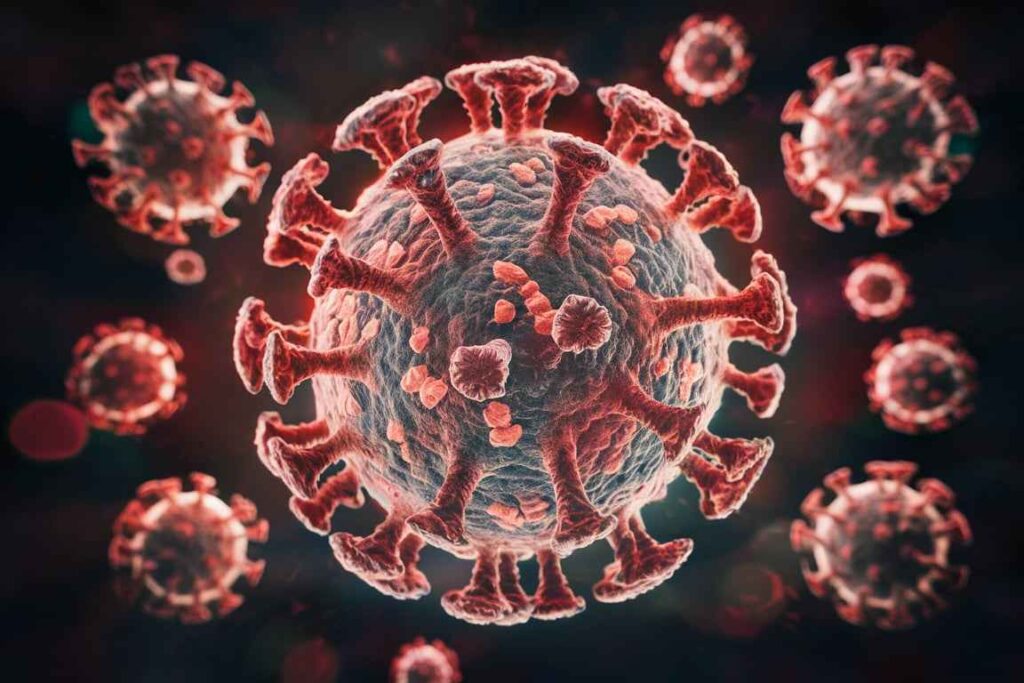
Properties
Structure
- Shape: bullet-shaped.
- The genome is made up of a single strand of negative-sense RNA.
- Size: About 180 nm in length and 75 nm in diameter.
- Envelope: A lipid envelope with glycoprotein spikes that allow attachment and entrance into host cells.
Genetic material
The RNA genome encodes five proteins: nucleoprotein (N), phosphoprotein (P), matrix protein (M), glycoprotein (G), and RNA-dependent RNA polymerase (L).
Life Cycle
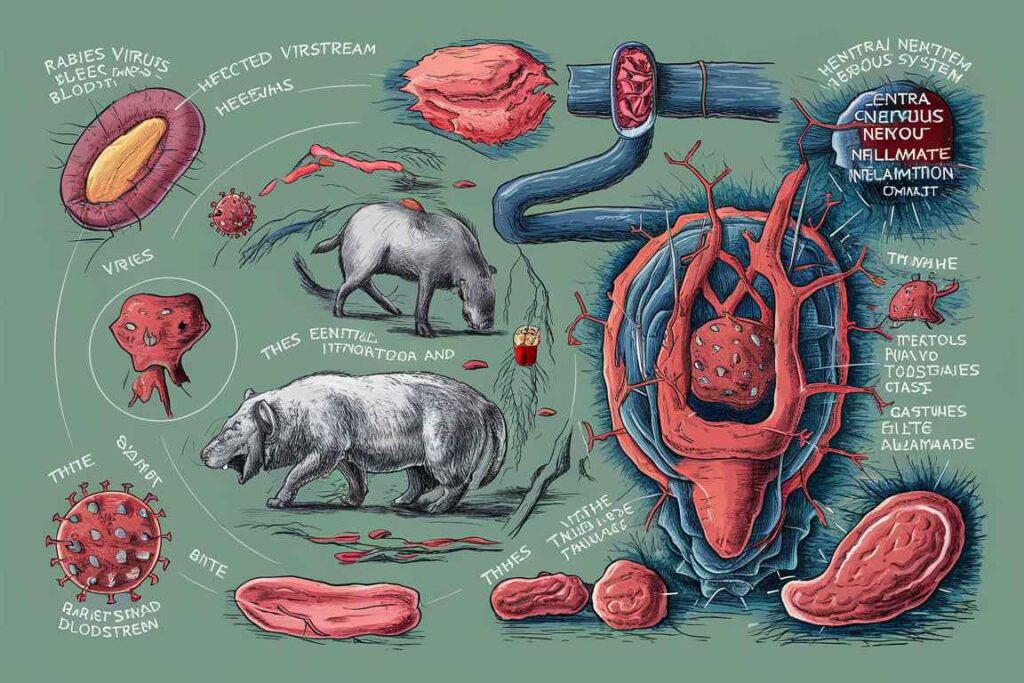
Entry:
- The virus enters the body by a bite or scratch from an infected animal, which introduces virus-laden saliva into the wound.
- The glycoprotein spikes bind to the nicotinic acetylcholine receptors on muscle cells and neurons.
Replication:
- The virus enters the host cell and uncoats to release its RNA.
- The RNA-dependent RNA polymerase converts negative-sense RNA into positive-sense mRNA.
- The mRNA is translated into viral proteins, and new viral RNA genomes are produced.
Assembly & Release:
In the host cell’s cytoplasm, newly generated viral components assemble to form virions.
The mature virions emerge from the host cell membrane, obtaining an envelope and spreading to neighboring cells.
Spread across the host:
The virus travels retrograde from peripheral nerves to the central nervous system. It causes encephalitis and then spreads centrifugally to other tissues, including salivary glands, skin, and cornea.
Pathogenesis
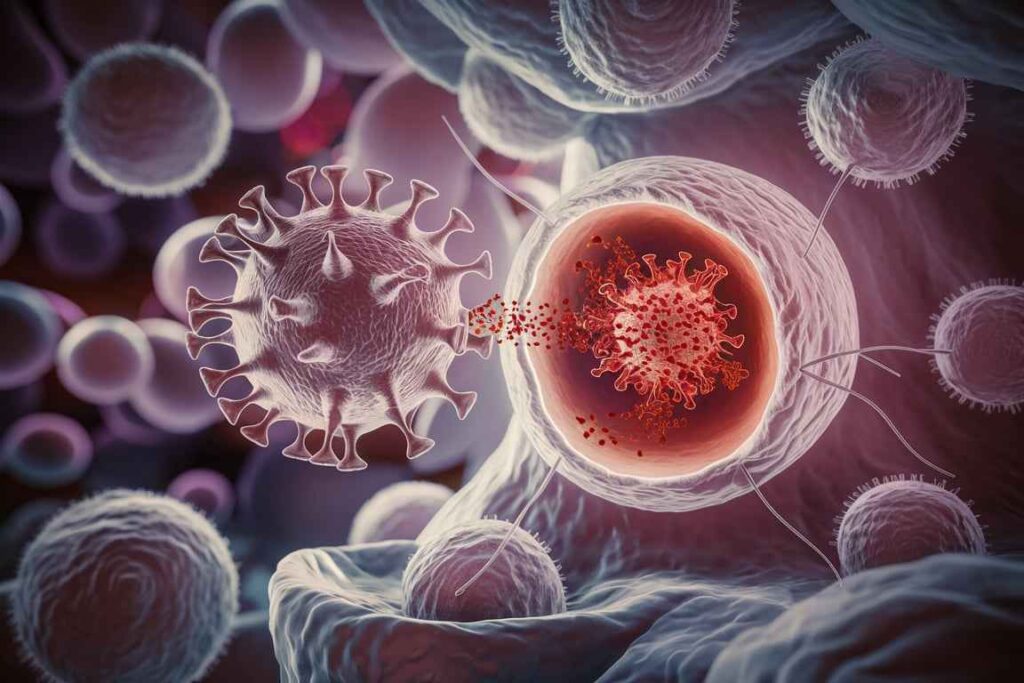
Incubation Period:
The duration varies between a few weeks and several months, depending on the location of the bite, virus load, and closeness to the CNS.
Neurological phase:
- After infecting the CNS, the virus produces inflammation and neuronal dysfunction.
- The symptoms include fever, headache, agitation, disorientation, hallucinations, hydrophobia, and hypersalivation.
Late stage:
If left untreated, the condition will progress to paralysis, coma, and death.
Clinical symptoms
Furious (encephalitic) rabies.
Hyperactivity, hydrophobia, and aerophobia (the dread of drafts or fresh air).
Paralytic (dumb) Rabies:
Muscle weakening, paralysis, and sensory loss occur gradually.
Diagnosis: Clinical Signs
Based on previous exposure (e.g., animal bite) and symptoms.
Lab tests:
- The Direct Fluorescent Antibody (DFA) Test detects viral antigens in brain tissue after death.
- PCR (Polymerase Chain Reaction) detects viral RNA in saliva, serum, and cerebrospinal fluid(CSF), or skin biopsies.
- Serology: Detects rabies-specific antibodies in serum or CSF, usually in vaccinated individuals or post-mortem
Prevention and Treatment
Pre-exposure prophylaxis:
Rabies vaccine is recommended for high-risk individuals (such as veterinarians, laboratory professionals, and tourists to endemic areas).
Post-exposure prophylaxis (PEP):
Immediate wound cleansing, rabies immunoglobulin delivery, and a series of rabies vaccinations are recommended following probable exposure.
Importance of Rabies Control
- Animal Vaccination: Pet and livestock vaccinations are administered on a regular basis.
- Wildlife Management: The prevention of rabies in wild animal populations by oral immunization programs.
- Public Awareness: Education on how to prevent interaction with wild animals and seek quick medical assistance if exposed.
Frequently Asked Question
Define
Rabies virus is a neurotropic virus that belongs to the Rhabdoviridae family. It is a single-stranded RNA virus and is primarily transmitted through the bite of an infected animal, such as a dog or bat. Rabies virus is a highly neurotropic virus that causes a severe and usually fatal disease known as rabies in mammals, including humans. It belongs to the Rhabdoviridae family and the Lyssavirus genus.
What are the importance of Rabies Control ?
The importance of Rabies Control are
1. Animal Vaccination:
2. Wildlife Management:
3. Public Awareness
Related Article
Digestive system of frog: Anatomy and Physiology of digestion

